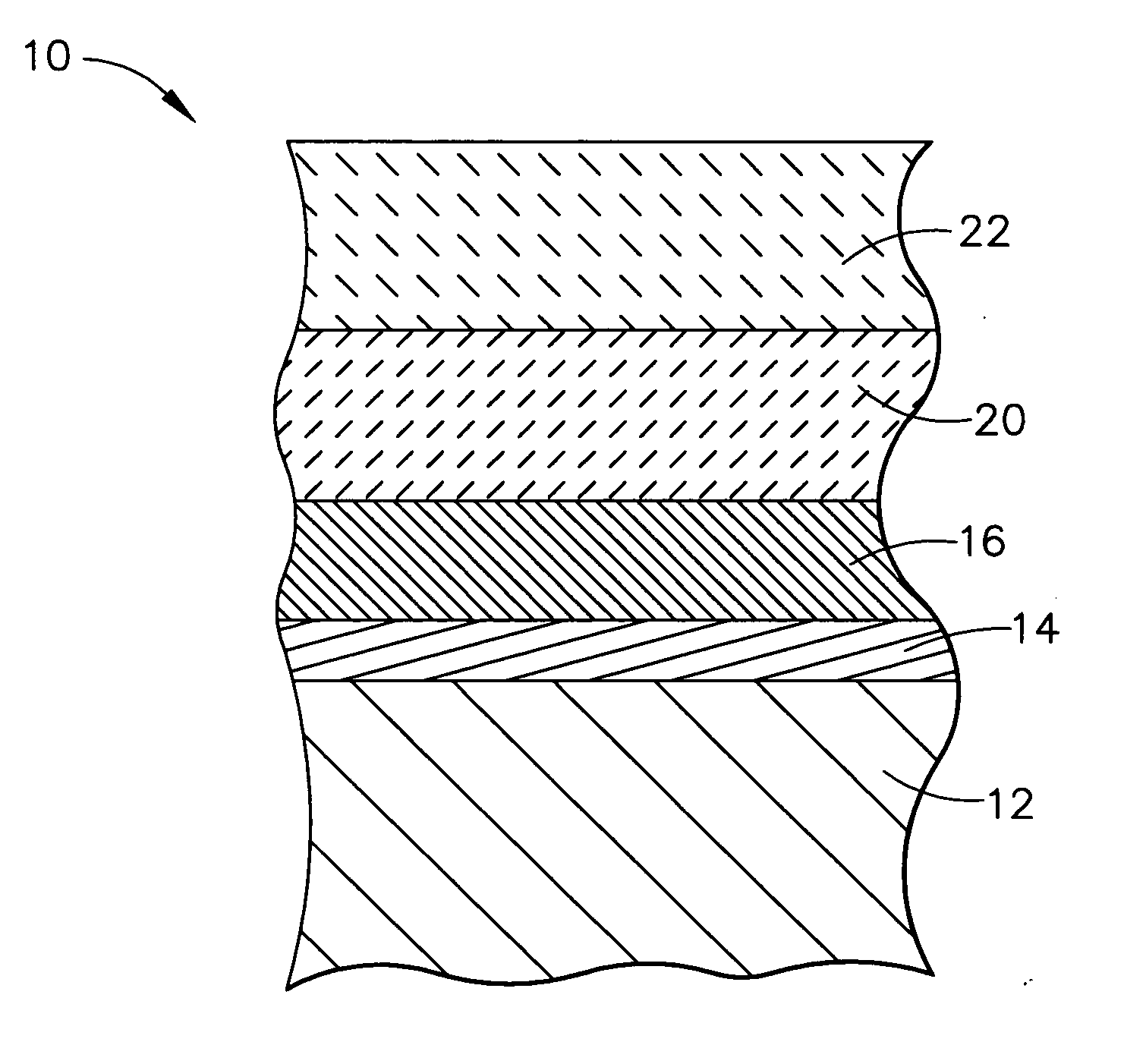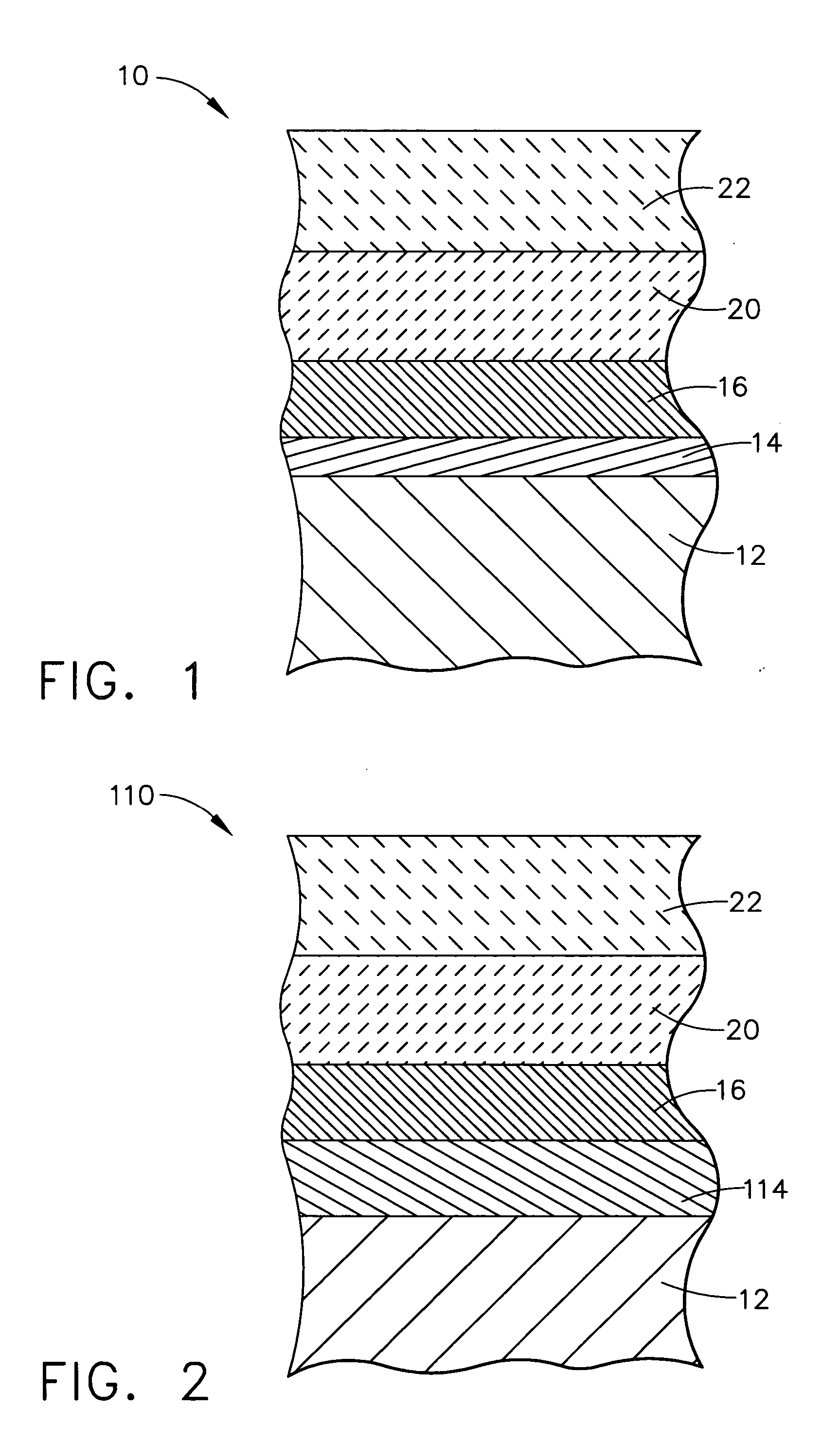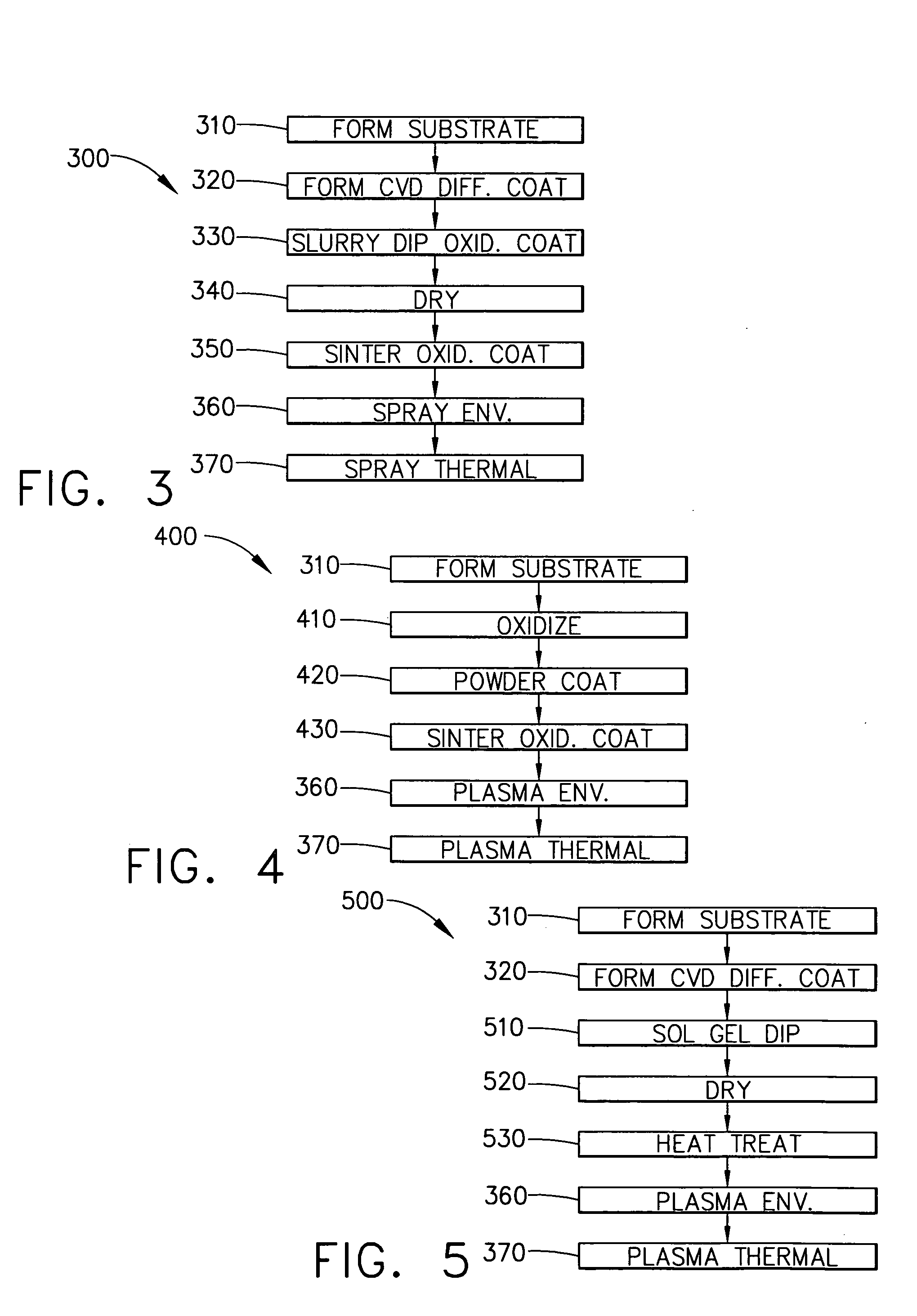Oxidation barrier coatings for silicon based ceramics
a technology of oxidation barrier coating and silicon based ceramics, which is applied in the field of coatings for ceramics, can solve the problems of siosub>2 /sub>scale, the loss of ceramic material from ceramic combustor and turbine components at a few microns per hour, and the erosion of silicon based ceramics
- Summary
- Abstract
- Description
- Claims
- Application Information
AI Technical Summary
Benefits of technology
Problems solved by technology
Method used
Image
Examples
Embodiment Construction
[0025] The following detailed description is of the best currently contemplated modes of carrying out the invention. The description is not to be taken in a limiting sense, but is made merely for the purpose of illustrating the general principles of the invention, since the scope of the invention is best defined by the appended claims.
[0026] Airfoils, combustors, and turbine engine components made from silicon nitride and silicon carbide have the potential to substantially improve turbine engine performance. But these silicon-based components require barrier coatings to protect them from the turbine engine-operating environment. In general, the present invention provides a coating system that includes a cation diffusion barrier coating and an oxidation barrier coating of silicon oxynitride and metallic silicates. The diffusion barrier coating prevents undesirable diffusion of cations from the substrate into the coating system. Cations are created in the substrate during formation o...
PUM
| Property | Measurement | Unit |
|---|---|---|
| thickness | aaaaa | aaaaa |
| thick | aaaaa | aaaaa |
| thick | aaaaa | aaaaa |
Abstract
Description
Claims
Application Information
 Login to View More
Login to View More - R&D
- Intellectual Property
- Life Sciences
- Materials
- Tech Scout
- Unparalleled Data Quality
- Higher Quality Content
- 60% Fewer Hallucinations
Browse by: Latest US Patents, China's latest patents, Technical Efficacy Thesaurus, Application Domain, Technology Topic, Popular Technical Reports.
© 2025 PatSnap. All rights reserved.Legal|Privacy policy|Modern Slavery Act Transparency Statement|Sitemap|About US| Contact US: help@patsnap.com



